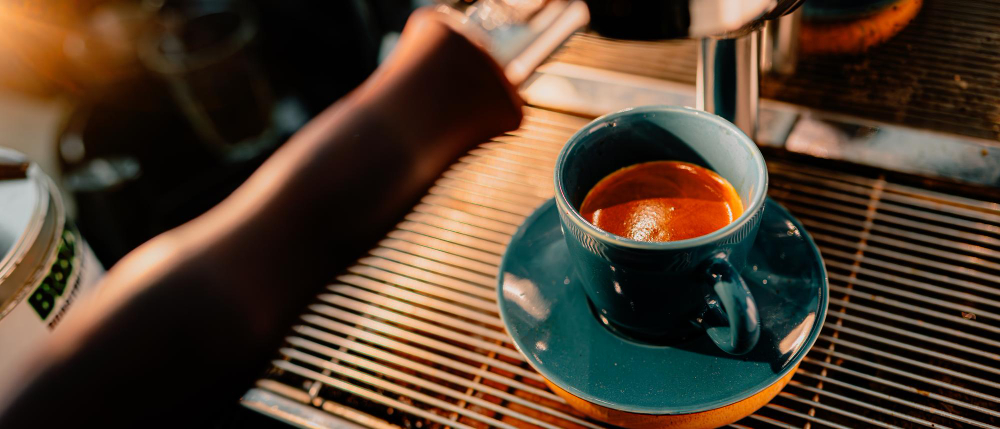
5 Myths About “Strong” Coffee
“Strong coffee” is a term thrown around often—but what does it really mean? For many people, strength is equated with caffeine content, bitterness, or even roast darkness. The truth is, most of what we think we know about strong coffee is based on myth, not fact.
This article busts the most common myths about strong coffee so you can brew smarter and sip better.
Myth #1: Strong Coffee Means High Caffeine
One of the biggest misconceptions is that a cup of strong-tasting coffee must have a lot of caffeine. In fact, flavor intensity and caffeine content aren’t always linked.
Light roasts often have slightly more caffeine by volume than dark roasts, since they retain more density. Brewing method and ratio have a greater impact on caffeine than taste does.
To understand real caffeine strength:
- Check your brew ratio (coffee-to-water)
- Remember espresso is concentrated, but served in small volume
- Compare cold brew vs. drip for caffeine per ounce
- Use light or medium roast if caffeine is your focus
- Don’t judge strength purely by bitterness
Myth #2: Strong Coffee Tastes Bitter
Bitterness is often mistaken for strength, but the two are not the same. Bitterness can come from over-roasting, over-extraction, or poor-quality beans—not true strength.
A strong, well-brewed cup can be bold and rich without being harsh or unpleasant.
How to avoid bitterness confusion:
- Grind properly—too fine can over-extract
- Use proper water temperature (195–205°F)
- Avoid stale beans or supermarket blends
- Balance strength with body and sweetness
- Focus on flavor clarity, not just bite
Myth #3: Dark Roasts Are Always Stronger
Dark roasts have a bold, smoky flavor—but that doesn’t make them stronger in caffeine or body. In fact, roasting longer reduces bean density and volume-based caffeine content.
What you’re tasting is roast character, not actual strength.
Here’s what to know:
- Dark roast = bold taste, not more caffeine
- Light roast = denser beans with more complex notes
- Use a scale to measure coffee accurately
- Try medium roast for balance and depth
- Don’t let roast level mislead your perception
Myth #4: Espresso Is the Strongest Coffee
Espresso tastes intense, but it’s served in small shots. Per ounce, it’s high in caffeine—but a full mug of drip coffee usually delivers more total caffeine.
What makes espresso seem strong is its concentration, crema, and quick delivery—not caffeine overload.
Keep this in mind when comparing:
- Espresso: ~60–70 mg caffeine per ounce
- Drip coffee: ~95–120 mg per 8-ounce cup
- Cold brew: Often stronger in both flavor and caffeine
- Use serving size + brew method for comparison
- Intensity ≠ strength across the board
Myth #5: More Grounds = Stronger Coffee
It might seem logical: more coffee grounds, more strength. But piling on grounds without adjusting water, grind, or time can cause imbalance, over-extraction, or sludge.
Brewing strength is about ratio—not just quantity.
Here’s how to do it right:
- Stick to a 1:15–1:18 coffee-to-water ratio
- Use a digital scale for accuracy
- Adjust grind and time before adding more coffee
- Dial in with intention, not just volume
- More grounds ≠ better taste
Common Misunderstandings
Many strong coffee myths stem from taste assumptions or poor brewing habits. Knowing the difference between flavor strength and caffeine strength helps you enjoy your coffee more confidently.
Avoid these mix-ups:
- Assuming darker is always stronger
- Equating bitterness with caffeine
- Thinking espresso has the most caffeine overall
- Overloading your brewer with coffee grounds
Advice for Beginners
Strong coffee doesn’t have to be bitter or overpowering. New brewers should explore strength by dialing in grind, ratio, and roast—without falling for the myths.
Here’s where to start:
- Try different roasts and brew styles
- Use a scale to control strength precisely
- Balance your brews with good beans and clean water
- Focus on taste, not assumptions
Expert Tips
Ready to level up? Professionals build strong yet balanced cups using data, gear, and technique—not guesses.
Get expert results with:
- Refractometers to measure Total Dissolved Solids (TDS)
- Customized grind profiles for brew method
- Brewing apps to track recipes and strength scores
- Experimenting with light roasts at high extraction
Takeaway
“Strong coffee” doesn’t mean what most people think it does. True strength is a balance of flavor, caffeine, and method—not bitterness or darkness. By busting these myths, you can take full control of your brew and enjoy a cup that’s bold, smart, and exactly how you like it.
